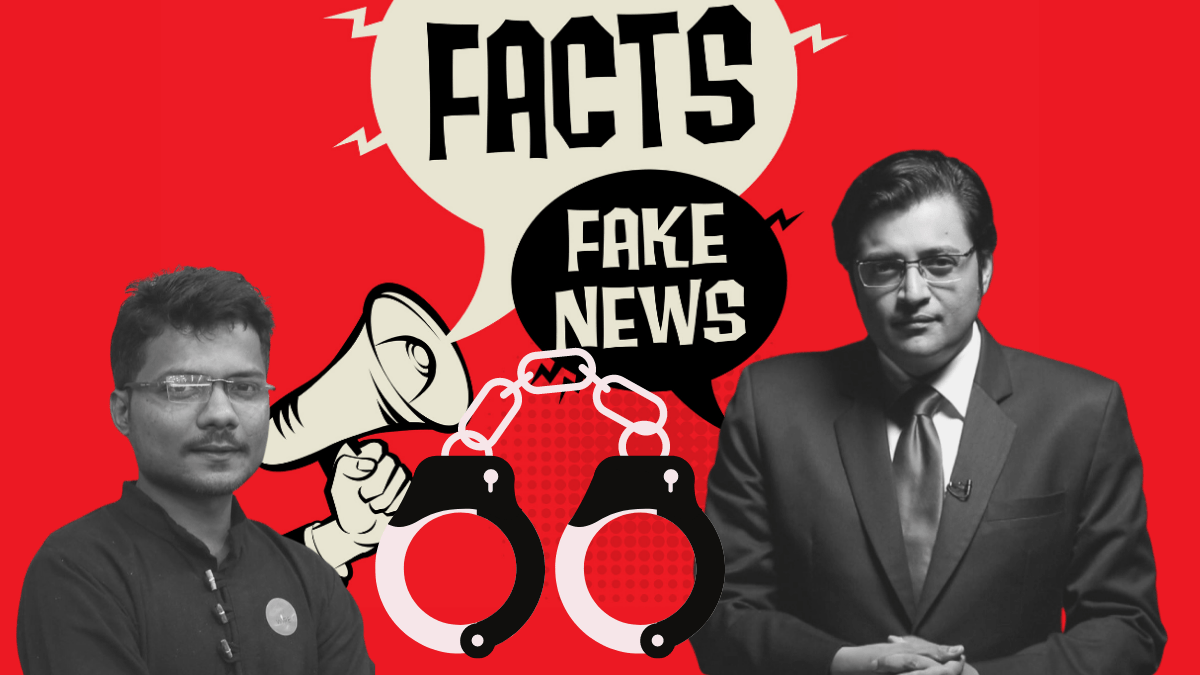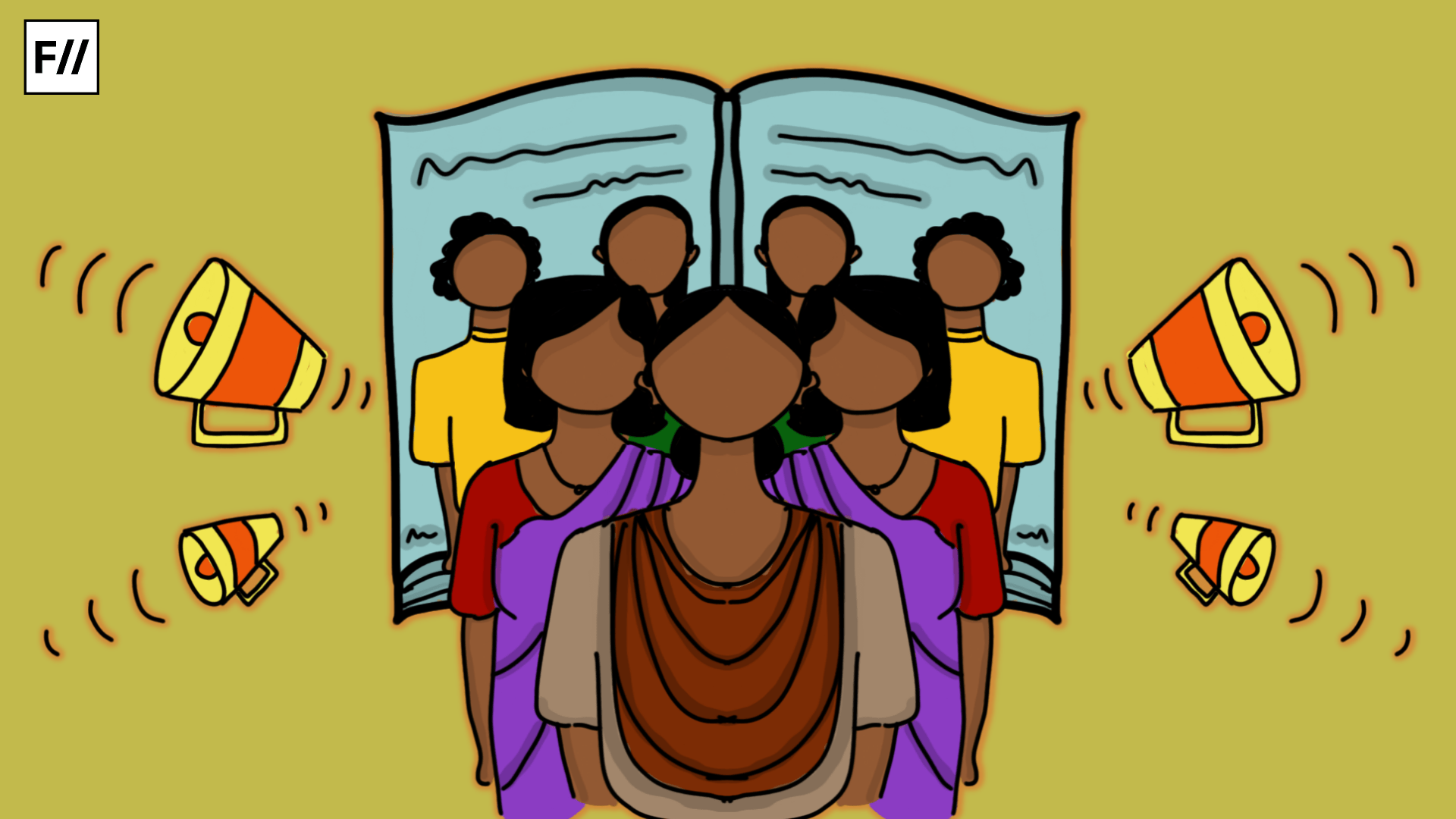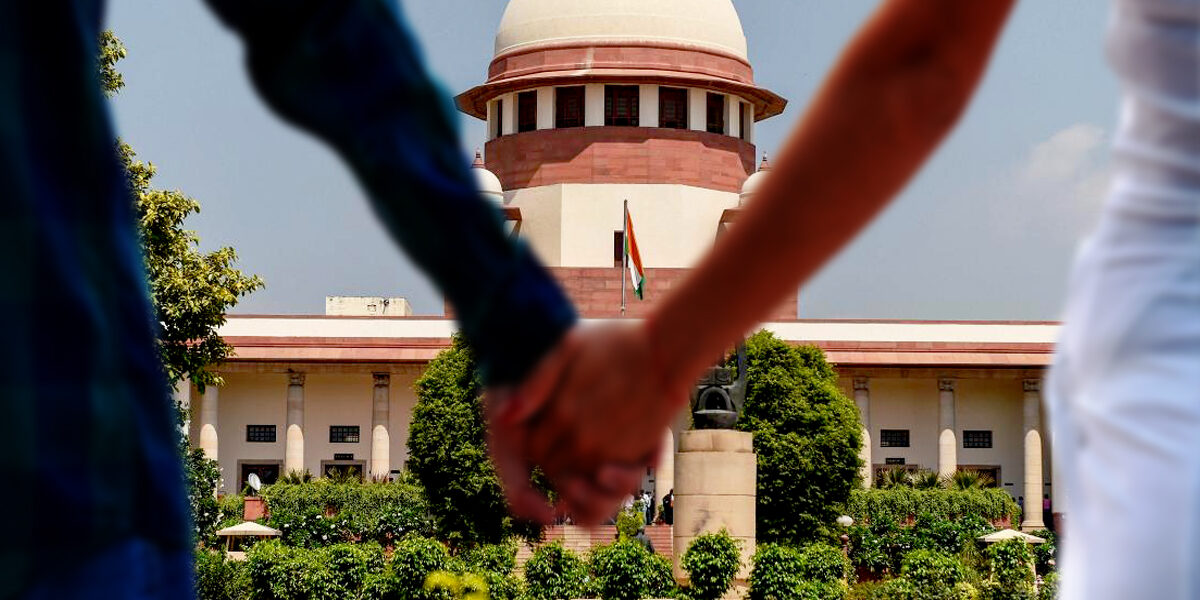Trigger Warning: News on Violence, Police Brutality
The horrific events that transpired on the night of 15 December, 2019 in Jamia Milia University is a memory we all of us University students engaged in activism wish to obliterate. Police brutality is hardly uncommon in India but the whole brazenness of the affair shook even the bravest of hearts. The Delhi police unleashed its most hideous face in the capital of a democratic country and the news of multiple attacks endured by our fellow Left student activists was all over the town—except mainstream media. The propaganda run by anchors on national news channels relentlessly shouting on Prime Time debates was appalling.
Recounting that tragic December, I recall how even while I was safe and sound in the comfort of my home, my body would recoil at the faintest sound of journalists arguing whether the Muslim protesters even deserved to exist. While our common chat groups were flooded with hashtag SOSJamia followed by grisly pictures of skulls cracked open and ankles bleeding from the brutal baton-charge, there was a parallel narrative of the same (wounded) students creating nuisance in the University campus.
Amidst this influx of mind-numbing ground reports, the rumour of a Muslim student, Shakir’s death did not seem inconceivable at all. With no news channel doing ethical and impartial coverage of the student protests, there was no other alternative method of verifying the dismal news, to the exception of social media. As it fortunately turned out, the student in question was alive and breathing though he was still suffering from grave injuries.
In no time, it was made a point by pro-establishment media platforms like OpIndia and Swarajya that counter to the Left-wing “propaganda”, no person had died. The integrity of the protesters was unfairly questioned and the disparaging headlines felt like an insult to the indomitable courage exhibited by the students of JMI and AMU. That a protester has to be dead to finally earn the sympathies of this state was the loud and clear message we received, besides the inference that our legitimate fears were propaganda to the wider public.
To arrest a Bahujan journalist for such frivolous charges amidst a pandemic while thousands of falsified news that can be verified by a simple Google search are circulated by the infamous BJP IT cell regularly, makes it seem that the identity of Kanojia’s caste had a stronger role to play in his arrest than India’s media would let on.
An Enquiry Into The Brahmanic System Of Indian Justice
More bewildering is the case of Bahujan journalist and former reporter at The Wire Hindi Prashant Kanojia who was arrested by the UP police in August on the dubious charges of disturbing communal harmony and creating tension between different communities which can threaten law and order.
He was arrested for allegedly sharing a morphed poster of Hindu Army’s Sushil Tiwari demanding a ban on the entry of SC, ST and OBC people into the Ram temple in Ayodhya, based on a screenshot of his Tweet which can not be found on his account. Contrary to the claims of UP police, Kanojia’s wife, Jagisha Arora, denies the charges and also claims that the screenshot doing rounds in the media is fabricated. In a post-truth era of misinformation to discredit dissenters of the regime, faking screenshots is not a foreign tactic.
Even if the screenshot is assumed to be true, the case lacks substantial evidence to incriminate Kanojia because the tweet has not yet been traced to his account. To arrest a Bahujan journalist for such frivolous charges amidst a pandemic while thousands of falsified news that can be verified by a simple Google search are circulated by the infamous BJP IT cell regularly, makes it seem that the identity of Kanojia’s caste had a stronger role to play in his arrest than India’s media would let on.
Earlier, founder of The Wire, S Varadarajan found himself in a similar spot when 2 FIRs were registered against him for misattributing a quote of Acharya Paramhans to the UP Chief Minister Adityanath. OpIndia, known to spread communal hatred through its sensational headlines spewing vitriol against minorities and dissenters, spared no time to quickly give it the tag of fake news. The single example I offered here is only one of the many pieces compiled in The Wire Archives of OpIndia claiming to debunk the lies spread by “Left-wing media” which are as good as unverified WhatsApp forwards.
One finds an eerie similarity between the prescribed mode of punishment—different penalties for the same crime committed by people of different varnas (castes), favouring the Brahmins—in the ancient law code of Manu and the questionable fashion in which justice is being meted out in India.
Citing another example from OpIndia, I recently came across its fact-check alleging the The Wire journalists of spreading fake news regarding the attack on farmer protesters by BJP workers. Intrigued by the clickbait-y headline, I kept scrolling through the ridiculously lengthy article hoping to find the fact-check, only to find a few lines towards the end explaining the context of the attack (as claimed by OpIndia, the protesters were moving towards the BJP office that incited the attack). The last time I checked, peacefully demonstrating in front of a political party’s office is not unconstitutional and definitely does not call for an attack by the party members. A rational person would find it hard to believe the equally preposterous justification of the attack could serve as a “fact-check”.
However, from the perspective of a reader already inclined towards that political party, wouldn’t this inconsequential piece of information serve as a valid explanation for the attack?
Disheartened as I am at people believing these twisted media trials, I also recognised the power of a popular narrative in India. A single piece of news can be perceived through different vantage points by each person, allowing the interplay of personal bias to shape what we believe in the absence of cold hard facts. Valerie Alia had termed this effect “The Rashomon Principle” in her book, Media Ethics and Social Change taking inspiration from Kurosawa’s film Rashomon (1950), in which the same crime incident is portrayed through four contradictory points of view.
Now, The Big Question Is Perhaps—Whose Version Wins?
To seek its answer, we must refer to Antonio Gramsci who established the role of a power-wielding hegemon’s ideology in giving legitimacy to power relations and preserving them. These dominant ideologies also dubbed as the “invisible power”, backed and propagated by influential people come to be “taken for granted”—a fact that needs no further enquiry—over a course of time. Apart from the bias stemming from personal experiences and the environment we grew up in, this bias or the dominant ideology can also be “manufactured” by the media we consume. The fourth pillar of democracy is decaying and it is dependent on the business houses that sponsor its maintenance.
One must not undermine the power of a narrative in shaping the public opinion on the foundation of which the powerful stand. It is a terrible mistake to consider fake news as an untruth. It is a blend of jumlas (clever quips), overwhelming bias towards the majoritarian government, vilifying minorities and exaggerations.
Therefore, before indulging in a reductive argument equating strategised Right-Wing propaganda, influenced by the politically and economically powerful and isolated incidents of accidental sharing of fake news by Left-liberal media, one must step back and analyse the consequences of both. Recent Netflix documentaries such as The Social Dilemma and The Great Hack show how dominant political parties and groups can alter our deepest beliefs, sow communal hatred and even define who we vote for, through dedicated advertising and propaganda. In contrast, the supposed “Left-wing media” often brings the suppressed voices of the marginalised to the forefront that has a restricted scope of impact on the national affairs, much less the “national security and integrity”.
Also read: The Rise of Fake News And What It Means Today
Overcoming The Nuisance of Fabricated News
Quoting Rasmus Nielsen, the Director at Reuters Institute for the Study of Journalism, the devastating impact of internet penetration in India on the unbridled peddling of false news is more “sophisticated and challenging” than the West. Taking serious note of the spurt in spontaneous acts of communal violence, it is the imperative of the government alone to formulate new laws for holding news channels accountable for what they broadcast.
Additionally, in case fabricated news has been shared on a digital media platform or a news channel, it must be made mandatory to issue a proper statement of apology along with the corrected facts. A good example of an apology was the one tendered by S Varadarajan the very next day, taking full responsibility for his words even though it was only partially wrong.
However, I believe it is an over-optimistic approach to expect the people in Parliament to dig their own grave by introducing a standard media policy for regulating the hateful content that keeps them in power. Knowing that fully well, to resist is a rational human’s instinct and thus, we have witnessed many independent fact-checking websites and media platforms crop up, such as AltNews and NewsLaundry that are committed to protecting the sanctity of journalism.
Our hope rests with the few journalists striving to provide quality news. Aiming to bring out higher accuracy in their news reports, journalists adopt the method of Triangulation through which they corroborate conversational evidence, written evidence and observational evidence to give out a strong, informed opinion based on their learning.
Coming back to Gramsci, one must not undermine the power of a narrative in shaping the public opinion on the foundation of which the powerful stand. It is a terrible mistake to consider fake news as an untruth. It is a blend of jumlas (clever quips), overwhelming bias towards the majoritarian government, vilifying minorities and exaggerations. People are made into unthinking consumers of misinformation that has the potential to make you believe that the billionaire capitalist is a victim and a farmer crushed under the weight of debts is the problem.
Chomsky made us aware of this same threat in a neoliberal democracy that maintains the façade of a free and egalitarian society, open to public participation. You, as a citizen of a democratic nation, are welcome to give your feedback on public policies, but what do you do if your free-willed opinion is not really yours? What if your “consent is manufactured” by pro-regime propaganda?
Those are the questions we need to answer.
Also read: Should Feminists Be Worried About “Fake News” Circulation?
References
- Manufacturing Consent, Noam Chomsky and Edward S. Herman
- Media, Persuasion and Propaganda, Marshall Soules
- Is Media A Tool for Propaganda or Tool for Information?, Shehu Enoch Amila
About the author(s)
Deepshi Chowdhury is an eager political commentator struggling through her history honours course at LSR, Delhi. Painting revolutionary art and curating fusions of incompatible delicacies are her only two passions besides harbouring a penchant for articulating her meek dissenting voice through her mighty pen while listening to Faiz. Her words and portraits of Old Delhi's dilapidated doors are her only legacy.




